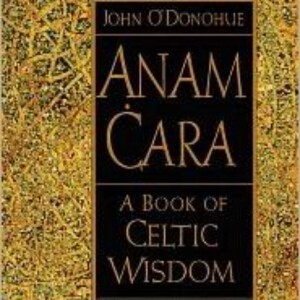Episodes

Friday Mar 14, 2025
Friday Mar 14, 2025
1 What's Bittersweet Memories
"Bittersweet Memories" by Catharina Maura explores the complexities of love, loss, and the lingering emotional ties that shape personal history. The narrative centers on the protagonist's journey through past relationships, marked by nostalgia and reflection, as she navigates the interplay between cherished moments and the pain of separation. The story delves into themes of healing, self-discovery, and the bittersweet nature of recalling experiences that have defined her, highlighting how these memories inform her present and shape her future.
2 Key Concepts of Bittersweet Memories
In "Bittersweet Memories" by Catharina Maura, Chapter 1 introduces the theme of nostalgia and the complexity of remembering the past. Subsequent chapters, particularly Chapters 4, 7, and 10, explore this theme further as they delve into the protagonist’s recollections of pivotal moments in their life, grappling with both joyful and painful memories. These chapters illustrate how nostalgia can be both comforting and suffocating, emphasizing the duality of cherished memories and the longing for what was lost.
3 In-Depth Chapter Analysis of Bittersweet Memories by Catharina Maura
In "Bittersweet Memories" by Catharina Maura, the theme of nostalgia and the complexity of memory is poignantly explored through various chapters that reflect on the past's bittersweet nature. For instance, in Chapter 3, the protagonist revisits childhood memories tied to a family home, where the lingering scents and sounds evoke a deep sense of longing and loss. This chapter illustrates how memories can be both comforting and painful, as the protagonist grapples with the passage of time and the impermanence of happiness. The detailed descriptions of the home, with its faded photographs and dusty corners, serve as a metaphor for how we hold onto the past, even as it inevitably slips away.
Another key chapter is Chapter 6, where the protagonist confronts a past relationship. The emotional weight of their shared experiences creates a juxtaposition between cherished moments and unresolved heartache. Through dialogues and flashbacks, Maura captures the essence of love intertwined with regret, showcasing how love can shape our identities while also leaving scars. The vivid imagery and emotional undertones in this chapter reinforce the theme, emphasizing that while memories can be a source of solace, they can also haunt us, reminding readers of the delicate balance between joy and sorrow that defines human experience.
Book Summary Audio https://www.bookey.app/audiobook/bittersweet-memories
Quotes https://www.bookey.app/quote-book/bittersweet-memories
Youtube https://www.instagram.com/catharinamaura/reel/C9BnauERCcL/
Amazon https://www.amazon.com/Bittersweet-Memories-Off-Limits-Catharina-Maura-ebook/dp/B09PSMSYJY
Goodreads https://www.goodreads.com/book/show/60075260-bittersweet-memories

Thursday Mar 13, 2025
Thursday Mar 13, 2025
1 What's Between a Rock and a Hard Place
"Between a Rock and a Hard Place" by Aron Ralston is a gripping memoir detailing the author's harrowing experience of becoming trapped while canyoneering alone in Utah's Blue John Canyon. The central theme revolves around survival, personal resilience, and the profound relationship between humans and nature. Ralston recounts the physical and psychological challenges he faces over several days as he struggles against the odds, ultimately leading him to make an agonizing decision to amputate his own arm to escape. Through this ordeal, he reflects on the importance of life, the choices we make, and the enduring strength of the human spirit in the face of extreme adversity.
2 Key Concepts of Between a Rock and a Hard Place
In "Between a Rock and a Hard Place," the theme introduced in Chapter 1 revolves around the struggle for survival and the importance of self-reliance. This theme recurs in chapters where Aron Ralston details his harrowing experience during his hiking accident in Blue John Canyon. Notably, Chapters 3 and 4 emphasize his resourcefulness and determination as he confronts the dire situation of being trapped. Additionally, Chapter 6 captures his psychological battle, illustrating how his mental resilience plays a crucial role in his fight for survival. These chapters collectively reinforce the central theme of the book by showcasing the extremes of human endurance and the will to live against overwhelming odds.
3 In-Depth Chapter Analysis of Between a Rock and a Hard Place by Aron Ralston
"Between a Rock and a Hard Place" by Aron Ralston is a gripping memoir that chronicles his harrowing experience trapped in a canyon and the subsequent fight for survival. The book’s structure is divided into several key chapters that reflect his physical and psychological journey. In the opening chapters, Ralston vividly recounts his adventurous spirit and love for the outdoors, setting the stage for his eventual misadventure. These early reflections highlight themes of independence and the human connection with nature, illustrated through his joy in exploration and the initial freedom he feels while trekking through the Utah canyons.
As the narrative progresses into crucial chapters detailing his entrapment and struggle, themes of isolation, desperation, and survival take center stage. For instance, in the chapter where Ralston realizes the gravity of his situation after his arm becomes pinned by a boulder, he undergoes a profound transformation. The despair he feels contrasts sharply with the resilience he demonstrates when he ultimately resorts to drastic measures to free himself. These moments not only underscore the physical challenges he faces but also delve deep into the psychological battle within him, where he confronts his mortality and the essence of his will to live. Through vivid imagery and introspective moments, Ralston illustrates the interplay between hope and despair, creating a poignant commentary on the human spirit and its capacity for endurance against insurmountable odds.

Wednesday Mar 12, 2025
Wednesday Mar 12, 2025
1 What's Being Logical
"Being Logical" by D.Q. McInerny presents a concise and accessible guide to the principles of logical reasoning. The book emphasizes the importance of clear thinking and sound judgment in everyday life, providing readers with tools to distinguish valid arguments from fallacies. McInerny explores fundamental concepts such as propositions, syllogisms, and the structures of arguments, while also illustrating common logical pitfalls. Through practical examples and straightforward explanations, the author encourages readers to cultivate a habit of logical thinking, ultimately aiming to enhance their decision-making and communication skills.
2 Key Concepts of Being Logical
In Chapter 1 of "Being Logical," D.Q. McInerny introduces the theme of the importance of clear thinking and the principles of logical reasoning. Subsequent chapters that relate closely to this theme include Chapter 2, which delves into the nature and purpose of logic, emphasizing its role in guiding rational discourse, and Chapter 4, which focuses on the concepts of definitions and their significance in logical analysis. Additionally, Chapter 7 addresses common logical fallacies, illustrating how clear thinking can be obstructed, thereby reinforcing the necessity of logical principles introduced in the first chapter. Together, these chapters expand upon the foundational ideas of clarity and sound reasoning highlighted in the opening.
3 In-Depth Chapter Analysis of Being Logical by D.Q. McInerny
"Being Logical: A Guide to Good Thinking" by D.Q. McInerny is structured to provide a comprehensive overview of the principles of logic and reasoning. In the first few chapters, McInerny introduces foundational concepts such as the nature of logic and the importance of clarity in thought. For example, he emphasizes that logical thinking is not merely a technical skill but a fundamental tool for making sense of the world around us. This sets the stage for subsequent chapters, where he delves into common fallacies and errors in reasoning, illustrating how they can lead to misconceptions and misguided beliefs.
As the text progresses, McInerny connects these foundational ideas to broader themes of effective communication and intellectual honesty. Chapters that focus on specific fallacies, such as ad hominem attacks and straw man arguments, highlight the dangers of poor reasoning in public discourse. By using real-world examples, he demonstrates how these fallacies undermine constructive debate and hinder truthful dialogue. The culmination of these discussions aligns with McInerny's overarching theme: that logical thinking is essential not only for personal understanding but also for fostering a rational society. Through careful examination of both the principles of logic and the pitfalls of illogical thinking, "Being Logical" serves as a valuable guide to cultivating clear and effective reasoning in everyday life.
Book Summary Audio https://www.bookey.app/audiobook/being-logical
Youtube https://www.youtube.com/watch?v=HZEMX3z016c
Amazon https://www.amazon.com/Being-Logical-Guide-Good-Thinking/dp/0812971159
Goodreads https://www.goodreads.com/en/book/show/721564.Being_Logical

Tuesday Mar 11, 2025
Tuesday Mar 11, 2025
1 What's Apostles of Disunion
"Apostles of Disunion" by Charles B. Dew explores the ideology and motivations behind the secession of Southern states from the Union during the American Civil War. The book delves into the writings and speeches of Southern leaders and politicians, revealing that racism and the defense of slavery were central to their arguments for disunion. Dew argues that the secessionist movement was driven not just by a desire for states' rights, but fundamentally by the need to preserve and protect the institution of slavery, exposing the deep social and political divides that fueled the conflict and underscoring the enduring legacy of these beliefs in American society.
2 Key Concepts of Apostles of Disunion
In Chapter 1 of "Apostles of Disunion" by Charles B. Dew, the theme revolves around the motivations and ideologies behind the southern states' secession from the Union. This theme resonates throughout several chapters of the book, particularly in Chapters 2 and 3, where Dew examines the rhetoric of secessionists and the influence of slavery as a central issue. Additionally, Chapter 5 further explores how the fear of losing the institution of slavery drove many southerners to support secession, reinforcing the foundational ideas established in the first chapter. Together, these chapters create a cohesive narrative that delves into the complex societal and political factors that fueled the drive for disunion.
3 In-Depth Chapter Analysis of Apostles of Disunion by Charles B. Dew
In "Apostles of Disunion," Charles B. Dew explores the myriad factors leading to the Confederacy's formation and the ideological underpinnings of secession. The opening chapters establish the significance of Southern leaders’ perspectives on slavery, linking their arguments directly to their fears of a Northern-dominated federal government undermining their "peculiar institution." For instance, Chapter 2 delves into the rhetoric from Southern politicians, like Jefferson Davis, who framed secession not merely as a political act but as a defense of the Southern way of life, highlighting how crucial the preservation of slavery was to their identity and motivation. This chapter emphasizes the theme of Southern nationalism, illustrating how deeply intertwined the notions of state sovereignty and slavery were.
Later chapters, particularly Chapter 4, broaden the discussion to include how fear of abolitionism galvanized support for secession among the Southern populace. Dew recounts the impact of the 1857 Dred Scott decision and its aftermath, emphasizing the perception among white Southerners that their social and economic futures were at stake. This chapter demonstrates how Southern leaders crafted a narrative of impending apocalypse should slavery be curtailed, thus utilizing fear to solidify their cause. By the end of the text, Dew artfully depicts how these contrasting visions of America—not just regional differences but foundational ideological divides—culminated in the Civil War, reinforcing the theme that the fight over slavery was not merely a political disagreement but a deep-seated struggle for societal identity.
Book Summary Audio https://www.bookey.app/audiobook/apostles-of-disunion
Youtube https://www.youtube.com/watch?v=7lKuZJC8KMs
Amazon https://www.amazon.com/Apostles-Disunion-Southern-Secession-Commissioners/dp/081392104X
Goodreads https://www.goodreads.com/book/show/1054644.Apostles_of_Disunion

Friday Mar 07, 2025
Friday Mar 07, 2025
1 What's Anam Cara
"Anam Cara: A Book of Celtic Wisdom" by John O'Donohue explores the profound connection between friendship, spirituality, and the natural world through the lens of Celtic tradition. The title, meaning "soul friend," encapsulates the essence of deep companionship that transcends mere social interaction, emphasizing the importance of finding true understanding and acceptance in relationships. O'Donohue weaves together poetry, philosophy, and insights from Celtic spirituality, advocating for a deeper appreciation of life’s mysteries and the sacredness of human connections. Ultimately, the book serves as a meditative guide to fostering inner peace, relationships, and a harmonious existence with oneself and the universe.
2 Key Concepts of Anam Cara
In "Anam Cara," John O'Donohue introduces the theme of deep friendship and soul companionship in Chapter 1. This theme resonates throughout the book, particularly in chapters discussing the nature of love, the sacredness of relationships, and the interconnectedness of all beings. For instance, Chapters 2 and 3 delve into the spiritual aspects of love and the importance of connection with both friends and nature, reinforcing the idea that true companionship nurtures the soul and enriches the human experience. These chapters deepen the exploration of how genuine relationships reflect our inner selves and the divine.
3 In-Depth Chapter Analysis of Anam Cara by John O'Donohue
In "Anam Cara," John O'Donohue explores the deep connections between friendship, spirituality, and the human experience. Each chapter serves to illuminate different facets of the soul and relationships, starting with the concept of "Anam Cara," or "soul friend," which is foundational to the text. This chapter emphasizes the significance of genuine connection in helping individuals discover their true selves. O'Donohue writes about the transformative power of friendship, suggesting that a true companion not only understands our depths but also reflects our essence, allowing us to navigate life's complexities more effectively.
As the book progresses, later chapters delve into themes of solitude, the beauty of nature, and the nuances of love—both romantic and platonic. For instance, in the chapter on solitude, O'Donohue portrays it as a sacred space for self-discovery rather than isolation, advocating for the balance between being alone and being with others. This theme intertwines with the idea of true friendship by underscoring that to fully connect with others, one must first cultivate a rich interior life. By connecting these themes across chapters, O'Donohue crafts a holistic understanding of how meaningful relationships enhance our existence, allowing us to embrace our vulnerability and celebrate our shared humanity.
Book Summary Audio https://www.bookey.app/audiobook/anam-cara
Quotes https://www.bookey.app/quote-book/anam-cara
Youtube https://www.youtube.com/watch?v=yoxcNSTcEz8
Amazon https://www.amazon.com/Anam-Cara-Book-Celtic-Wisdom/dp/006092943X
Goodreads https://www.goodreads.com/book/show/74445.Anam_Cara

Thursday Mar 06, 2025
Thursday Mar 06, 2025
1 What's Tattoos on the Heart
"Tattoos on the Heart: The Power of Boundless Compassion" by Gregory Boyle explores themes of love, redemption, and the transformative power of compassion through the author's experiences as a Jesuit priest working with gang members and marginalized populations in Los Angeles. Through a series of poignant stories, Boyle illustrates how genuine connection, understanding, and acceptance can break cycles of violence and despair, ultimately fostering hope and healing. The book emphasizes the importance of seeing the humanity in others, advocating for a culture of kinship and the belief that everyone, no matter their past, deserves love and a second chance.
2 Key Concepts of Tattoos on the Heart
In Chapter 1 of "Tattoos on the Heart," Gregory Boyle introduces the theme of kinship and the importance of community in overcoming adversity. This theme resonates throughout several chapters in the book, particularly in Chapter 2, where Boyle emphasizes the notion of compassion and connection when discussing the lives of gang members and the impact of friendship. Additionally, Chapter 5 further explores this theme through the concept of radical inclusivity, illustrating how embracing one another fosters healing and transformation. Overall, the interplay of kinship and community is a consistent thread that runs through Boyle's narrative, highlighting the profound impact of belonging and support in the lives of those he serves.
3 In-Depth Chapter Analysis of Tattoos on the Heart by Gregory Boyle
In "Tattoos on the Heart," Gregory Boyle emphasizes the profound themes of kinship, redemption, and the transformative power of love through each chapter's narratives. For instance, in the chapter titled "Dis-grace," Boyle shares the story of a gang member who grapples with the weight of his violent past and seeks forgiveness. This chapter poignantly illustrates how grace can emerge from the most challenging circumstances, underscoring Boyle's belief that everyone is deserving of compassion and redemption. His recounting of moments when young men seek a path out of gang life highlights the importance of connection and accountability, reflecting Boyle's mission at Homeboy Industries.
Another significant chapter, "Homeboy," delves into the importance of community and solidarity in healing from trauma. Boyle details the supportive environment at Homeboy Industries, where former gang members find a sense of belonging and purpose. He recounts various personal stories that demonstrate how providing a nurturing space fosters hope and opportunities for transformation. This chapter solidifies the book's overarching theme that through love and acceptance, individuals can reclaim their identities and chart a new course in life. Boyle’s unwavering optimism shines through, showcasing that love is indeed the antidote to despair, which resonates deeply with readers and encapsulates the heart of his work.
Book https://www.bookey.app/book/tattoos-on-the-heart
Quotes https://www.bookey.app/quote-book/tattoos-on-the-heart
YouTuBe https://www.youtube.com/watch?v=V-IyMc-eVgU
Amazon https://www.amazon.com/Tattoos-Heart-Power-Boundless-Compassion/dp/1439153159
Goodreads https://www.goodreads.com/book/show/7090193-tattoos-on-the-heart

Wednesday Mar 05, 2025
Wednesday Mar 05, 2025
1 What's The Montessori Toddler
"The Montessori Toddler" by Simone Davies focuses on fostering independence, curiosity, and self-discipline in young children through the principles of Montessori education. The book provides practical guidance for parents and caregivers on how to create a nurturing and stimulating environment that encourages toddlers to explore their world, develop essential life skills, and engage in meaningful activities. By emphasizing respect, observation, and hands-on learning, Davies empowers adults to support toddlers in their growth and development while promoting a strong parent-child relationship grounded in understanding and trust.
2 Key Concepts of The Montessori Toddler
In Chapter 1 of "The Montessori Toddler," Simone Davies introduces the theme of respect for the child and the importance of observing their needs and interests. Subsequent chapters that align with this theme include Chapter 2, which discusses creating an enriching environment tailored to the toddler's development; Chapter 4, focusing on fostering independence through daily routines; and Chapter 8, which emphasizes the significance of mindful communication. Each of these chapters reinforces the idea of treating toddlers as capable individuals deserving of respect and autonomy in their learning journey.
3 In-Depth Chapter Analysis of The Montessori Toddler by Simone Davies
"The Montessori Toddler" by Simone Davies is structured to guide parents through the principles of the Montessori approach and its application in nurturing toddlers. Each chapter delves into different aspects of fostering independence, respect, and meaningful engagement in young children. For instance, the chapter on "Creating a Montessori Environment" underscores the importance of a prepared space that encourages exploration and autonomy. Davies emphasizes that environments should be child-sized and filled with accessible materials; this not only empowers toddlers to make choices but also cultivates their sense of agency.
Another pivotal chapter focuses on "Communication and Connection," showcasing how language plays a critical role in building relationships and understanding between parents and toddlers. Davies highlights the importance of using respectful language, modeling communication, and giving children time to express themselves. This chapter beautifully ties into the overarching theme of fostering independence while maintaining connection, as it illustrates how effective communication can enhance toddlers' confidence in their abilities and reinforce their emotional security. Each chapter builds on these themes, encouraging parents to embrace a respectful and child-centered approach to parenting.
Book https://www.bookey.app/book/the-montessori-toddler
Quotes https://www.bookey.app/quote-book/the-montessori-toddler
YouTuBe https://www.youtube.com/watch?v=tZk7QrkkotE
Amazon https://www.amazon.com/Montessori-Toddler-Parents-Raising-Responsible/dp/152350689X
Goodreads https://www.goodreads.com/book/show/38103723-the-montessori-toddler

Tuesday Mar 04, 2025
Tuesday Mar 04, 2025
1 What's The Pregnancy Project
"The Pregnancy Project" by Gaby Rodriguez is a poignant memoir that explores themes of identity, judgment, and societal expectations. In the book, Gaby, a high school student, undertakes a bold social experiment by faking her own pregnancy to challenge the stereotypes and stigma surrounding teen pregnancy. Through her narrative, she reflects on her personal experiences, the reactions of her peers and family, and the broader implications of teenage motherhood in a judgmental society. Ultimately, Gaby's story serves as a powerful commentary on the importance of empathy, understanding, and breaking down preconceived notions about teenage girls and their choices.
2 Key Concepts of The Pregnancy Project
In "The Pregnancy Project" by Gaby Rodriguez, Chapter 1 introduces the theme of identity and societal expectations, particularly focusing on the challenges faced by young women. This theme resonates throughout several chapters, particularly in Chapter 4, where Rodriguez explores the stigma associated with teen pregnancy and how it affects her self-perception. Additionally, Chapter 7 delves into her experiences in school, highlighting the pressure to conform to stereotypes, and Chapter 10 further examines her personal growth and understanding of her identity as she undertakes her social experiment. Together, these chapters illustrate the complexities of navigating one's identity in the face of societal judgment.
3 In-Depth Chapter Analysis of The Pregnancy Project by Gaby Rodriguez
In "The Pregnancy Project" by Gaby Rodriguez, each chapter intricately ties into the overarching theme of identity and societal perceptions. For instance, in the early chapters, Gaby outlines her motivations for conducting her senior project, exploring how stereotypes about teenage pregnancy affect not only the pregnant individuals but also the broader community. The chapter where she describes her decision to fake her own pregnancy is pivotal; it reveals her struggle between wanting to challenge these assumptions and the fear of the consequences. This conflict illuminates the perception that teenage girls are often boxed into narrow roles based on their circumstances, showcasing the pressures and expectations society places on young women.
As the narrative progresses, Gaby delves into the reactions of her peers and family, which develop the theme of empathy and understanding. In the chapter where her classmates react to her fake pregnancy, we see a spectrum of responses that range from support to judgment. This chapter is particularly significant because it captures the essence of her project's goal: to spark a conversation about the complexities of teenage pregnancy and challenge the stigma attached to it. For example, Gaby illustrates moments of vulnerability and strength, ultimately conveying that identity is not solely defined by one's choices but also by the narratives we create and share. Through these interconnected chapters, Rodriguez masterfully examines the implications of her experiment, encouraging readers to reconsider their own perceptions of teenage motherhood.
Book https://www.bookey.app/book/the-pregnancy-project
Quotes https://www.bookey.app/quote-book/the-pregnancy-project
YouTuBe https://www.youtube.com/watch?v=xdwknLhBbLI
Amazon https://www.amazon.com/Pregnancy-Project-Memoir-Gaby-Rodriguez/dp/1442446234
Goodreads https://www.goodreads.com/book/show/12027395-the-pregnancy-project

Friday Feb 28, 2025
Friday Feb 28, 2025
1 What's Picking Cotton
"Picking Cotton" is a powerful memoir by Jennifer Thompson-Cannino and Ronald Cotton that explores themes of justice, wrongful conviction, and the impact of trauma. The book recounts Jennifer's harrowing experience of being raped and her subsequent identification of Ronald Cotton as her assailant, which led to his wrongful conviction. Through their shared narrative, both Jennifer and Ronald illuminate the flaws in the criminal justice system, the pain of their experiences, and ultimately, their journey toward forgiveness and healing, highlighting the complexities of memory and the possibility of redemption.
2 Key Concepts of Picking Cotton
In "Picking Cotton," Jennifer Thompson-Cannino's exploration of themes such as wrongful conviction, empathy, and the quest for justice is deeply woven throughout the narrative. Chapter 1 introduces the harrowing experience of Thompson-Cannino's assault and the subsequent misidentification of Ronald Cotton as her attacker, setting the stage for discussions of trauma and the consequences of flawed justice. Later chapters, particularly those detailing the trial, the aftermath of the conviction, and the eventual exoneration, emphasize these themes by showcasing the personal journeys of both Thompson-Cannino and Cotton as they confront the impacts of the injustice system and seek healing and understanding. These reflections culminate in deep discussions about forgiveness and the need for systemic change, resonating with the foundational issues presented in the opening chapter.
3 In-Depth Chapter Analysis of Picking Cotton by Jennifer Thompson-Cannino
"Picking Cotton" by Jennifer Thompson-Cannino and Ronald Cotton weaves a compelling narrative that addresses themes of justice, forgiveness, and the fallibility of memory. In Chapter 1, Jennifer vividly recounts her harrowing experience of assault, which sets the stage for the critical issues surrounding victimhood and the criminal justice system. This chapter highlights the theme of trauma and the profound impact of wrongful accusations, as Jennifer's certainty in identifying Ronald as her attacker leads to his wrongful conviction. This theme is echoed throughout the book as readers witness the consequences of a flawed memory and the devastating effects on both individuals' lives.
As the story progresses, Chapter 7 emerges as a pivotal moment of transformation, emphasizing the theme of redemption and reconciliation. After Ronald's exoneration and their eventual meeting, both individuals confront their pasts and the pain they endured. Jennifer's journey from anger and guilt to empathy illustrates the power of forgiveness, while Ronald’s grace in facing both his wrongs and the societal structures that condemned him underscores the potential for healing. This chapter encapsulates the essence of the book's message: that while the scars of trauma remain, understanding and human connection can lead to a form of justice that transcends the legal system. Through personal anecdotes and emotional depth, "Picking Cotton" invites readers to reflect on the complexities of truth, the nuances of identity, and the possibility of starting anew.
Book https://www.bookey.app/book/picking-cotton
Quotes https://www.bookey.app/quote-book/picking-cotton
YouTuBe https://www.youtube.com/watch?v=VFckOIbkxmo
Amazon https://www.amazon.com/Picking-Cotton-Memoir-Injustice-Redemption/dp/0312599536
Goodreads https://www.goodreads.com/book/show/3955551-picking-cotton

Thursday Feb 27, 2025
Thursday Feb 27, 2025
1 What's Braving the Wilderness
In "Braving the Wilderness," Brené Brown explores the importance of belonging and authenticity in an increasingly disconnected world. She argues that true belonging requires us to be vulnerable and courageous, advocating for the necessity of embracing one's individuality while fostering genuine connections with others. Brown emphasizes the concept of "standing alone" as a means to find true community, encouraging readers to navigate the tensions of belonging in a way that honors their own self-worth and values. Through personal anecdotes and research, she offers practical guidance on how to cultivate a sense of belonging that is rooted in bravery, self-acceptance, and empathy.
2 Key Concepts of Braving the Wilderness
In "Braving the Wilderness," Brené Brown introduces the theme of belonging in Chapter 1, focusing on the importance of true belonging versus fitting in. Subsequent chapters that relate closely to this theme include Chapter 2, where she discusses the courage to stand alone and the importance of authenticity in relationships, and Chapter 5, which delves into the concept of vulnerability and how it fosters deeper connections. Throughout these chapters, Brown emphasizes the need for individuals to embrace their true selves to create genuine connections with others, further reinforcing the core message of belonging.
3 In-Depth Chapter Analysis of Braving the Wilderness by Brené Brown
In "Braving the Wilderness," Brené Brown explores the theme of belonging and the courage it takes to find one’s true self in a world often defined by conformity and societal expectations. One key chapter focuses on the importance of authenticity, where Brown emphasizes that true belonging requires being brave enough to stand alone. She shares personal anecdotes that illustrate how vulnerability plays a crucial role in forging genuine connections, highlighting that true belonging cannot be found through fitting in, but rather through being our authentic selves. For example, she recounts experiences where she felt disconnected from her surroundings and the liberation that came when she embraced her identity, showing that courage is essential for overcoming feelings of isolation.
Another pivotal chapter addresses the concept of wilderness, both metaphorically and literally, as a space for personal growth and self-discovery. Brown discusses how stepping into the wilderness symbolizes diving into uncertainty and embracing discomfort, echoing her belief that to truly connect with others, one must first be willing to face their own fears and insecurities. She shares stories of individuals who ventured into the wilderness of their own lives—whether through challenging relationships or difficult personal journeys—and emerged with a stronger sense of self and community. This chapter reinforces the overarching theme that courage, connection, and vulnerability are intertwined, laying a foundation for belonging that transcends superficial social ties.
Book https://www.bookey.app/book/braving-the-wilderness
Arthor https://www.bookey.app/quote-author/bren%C3%A9-brown
Quotes https://www.bookey.app/quote-book/braving-the-wilderness
YouTuBe https://m.youtube.com/watch?v=A9FopgKyAfI&t=0s
Amazon https://www.amazon.com/Braving-Wilderness-Quest-Belonging-Courage/dp/0812995848
Goodreads https://www.goodreads.com/book/show/34565022-braving-the-wilderness








